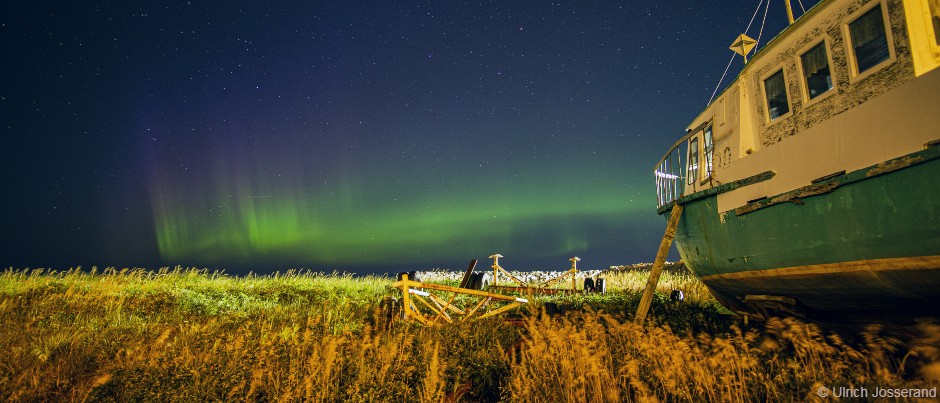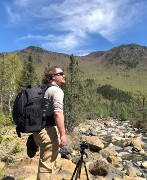The Québec maritime Blog

-
Station Uapishka
Sébastien St-Jean/Tourisme Côte-Nord
Northern Lights: When the Sky Dances over Eastern Québec
The beautiful dancing waves of light seen in the night sky are an iconic symbol of the north. If you’ve ever had the privilege of admiring this natural wonder, you’re unlikely to ever forget it. In high-latitude regions, these polar lights are known as aurora borealis, or northern lights, but they also occur in the south (where they’re called aurora australis or southern lights). This phenomenon is thus visible near the magnetic poles of the northern and southern hemispheres. Do you know what causes this unusual light show? And did you know that you can see northern lights in our regions? Keep reading to find out more!
What causes auroras

Polar lights originate on the sun’s surface some 150 million kilometres (93 million miles) away from Earth. The sun sends out a constant flow of charged particles known as solar wind. We’re protected from these radioactive particles by the magnetosphere, an immense magnetic field generated by the Earth’s core that diverts their trajectory and projects them towards the Earth’s poles.
Usually, this does not induce any light phenomenon. However, from time to time, the solar wind is strong enough to penetrate Earth’s magnetic field. The stream of particles then interacts with gases in the magnetic field, generating brilliant auroras near the Earth’s poles. Polar lights come in a variety of colours: green, red, pink, yellow, purple and blue. Their colour depends on the altitude at which the interaction occurs in the atmospheric layer known as the thermosphere.
When to see them

The further north you go, the more likely you are to see the northern lights. However, they can also be observed in southern Québec, sometimes as far south as the U.S. border! Certain conditions must be met for them to appear. To find out where and when you can see the northern lights, consult an aurora forecast app or visit the U.S. Space Weather Prediction Center website.
To be able to see the northern lights, the sky must be clear; you’re unlikely to spot them if there’s any cloud cover. You’ll also need to get away from city lights as well as avoid nights when the moon is full. A low and clear horizon will allow you to spot northern lights that are further north: it’s not uncommon to see auroras that are not directly above you but hundreds of kilometres away. Remember to also let your eyes adjust to the dark: avoid leaving your car lights on and don’t look at your phone outside!
Although the northern lights can be present throughout the year, you’re more likely to see them in the months of February/March and September/October. The best time to spot them is between 10 p.m. and 3 a.m. Remember to dress warmly if you plan to watch the night sky in the winter!
Where to see them in our regions

Bas-Saint-Laurent can be a great place to see the northern lights! In particular, Parc national du Bic is dark enough to see them easily. The Raoul-Roy lookout, at the western end of the park, offers a fantastic high view. Make sure you face north. Although auroras can appear anywhere in the sky, if you look in this direction, you may be able to see lights that are not directly above your head.
In Gaspésie, you can occasionally see the northern lights as far as Percé Rock, but my best observations have been in the Haute-Gaspésie sector. Light pollution is rare in this area. By following the coast of the St. Lawrence, where the horizon is low, you may be able to admire the aurora borealis dancing above Côte-Nord as well as further south. This is a great way to increase your chances of seeing this magical night show!
Côte-Nord is the best region to observe this phenomenon in Eastern Québec and the Uapishka (Groulx) Mountains are the best place to do so. Located beyond the 51st parallel on the edge of the Manicouagan Reservoir, Uapishka Station offers a clear view of the night sky. You’re bound to enjoy unforgettable moments in this unique wilderness environment! Northern lights can also be spotted further south in Côte-Nord. Keep your eyes on the sky at night: you may be in for a surprise!
Do you want to observe this amazing natural wonder? Keep in mind that even if you don’t see any northern lights, you can still enjoy stargazing at night! And why not start your evening by watching an incredible sunset?

(0) comment